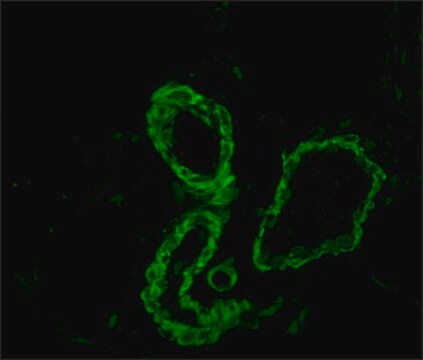Products may be shipped at a different temperature than the recommended long-term storage temperature. If the product quality is sensitive to short-term exposure to conditions other than the recommended long-term storage, it will be shipped on wet or dry-ice. If the product quality is NOT affected by short-term exposure to conditions other than the recommended long-term storage, it will be shipped at ambient temperature. As shipping routes are configured for minimum transit times, shipping at ambient temperature helps control shipping costs for our customers. For more information, please refer to the Storage and Transport Conditions document: https://www.sigmaaldrich.com/deepweb/assets/sigmaaldrich/marketing/global/documents/316/622/storage-transport-conditions-mk.pdf
M8250
MES hydrate
≥99.5% (titration)
Synonym(s):
2-(N-Morpholino)ethanesulfonic acid hydrate, 4-Morpholineethanesulfonic acid
About This Item
Recommended Products
Quality Level
Assay
≥99.5% (titration)
form
crystalline powder
storage condition
dry at room temperature
color
white
useful pH range
5.5-6.7
pKa
6.1
solubility
water: 0.25 g/mL, clear, colorless
application(s)
agriculture
clinical research
diagnostic assay manufacturing
life science and biopharma
storage temp.
room temp
SMILES string
O.OS(=O)(=O)CCN1CCOCC1
InChI
1S/C6H13NO4S.H2O/c8-12(9,10)6-3-7-1-4-11-5-2-7;/h1-6H2,(H,8,9,10);1H2
InChI key
MIIIXQJBDGSIKL-UHFFFAOYSA-N
Looking for similar products? Visit Product Comparison Guide
Related Categories
General description
With excellent water solubility and virtual insolubility in lipids, MES Buffer is impermeable to membranes, ensuring efficacy in cellular environments. Its applications span maintaining stability in cell culture media, protein-based buffer formulations, and electrophoresis running buffers. MES Buffer may also find usage in purifying antibodies, peptides, proteins, blood components, and growth factors. MES Buffer stands out as a better alternative to potentially toxic agents like cacodylate and non-zwitterionic buffers such as citrate and malate. MES Buffer proves valuable for adjusting growth media pH, stabilizing enzymatic solutions, and serving as a component of PAGE running buffer in diverse experimental settings.
Application
Features and Benefits
- Effective Buffering from pH 5.5-6.7 with a pKa of 6.1 (25 °C)
- Highly soluble in water
- Minimal metal ion binding
- Stable in a wide pH range
- Low UV absorptivity and Minimal reactivity
Preparation Note
Storage and Stability
Other Notes
Storage Class Code
11 - Combustible Solids
WGK
WGK 1
Flash Point(F)
Not applicable
Flash Point(C)
Not applicable
Personal Protective Equipment
Choose from one of the most recent versions:
Certificates of Analysis (COA)
Don't see the Right Version?
If you require a particular version, you can look up a specific certificate by the Lot or Batch number.
Already Own This Product?
Find documentation for the products that you have recently purchased in the Document Library.
Customers Also Viewed
Protocols
This procedure may be used for Mutanolysin products.
Enzymatic assay of lipase type XIII from Pseudomonas sp. using a coupled enzyme system of glycerol kinase and glycerophosphate oxidase (EC 3.1.1.3)
Related Content
Discover high-purity biological buffers for production scale. Ensure stability, pH control, and consistent supply with our expert manufacturing solutions.
-
How is shipping temperature determined? And how is it related to the product storage temperature?
1 answer-
Helpful?
-
-
How can I determine the shelf life / expiration / retest date of this product?
1 answer-
If this product has an expiration or retest date, it will be shown on the Certificate of Analysis (COA, CofA). If there is no retest or expiration date listed on the product's COA, we do not have suitable stability data to determine a shelf life. For these products, the only date on the COA will be the release date; a retest, expiration, or use-by-date will not be displayed.
For all products, we recommend handling per defined conditions as printed in our product literature and website product descriptions. We recommend that products should be routinely inspected by customers to ensure they perform as expected.
For products without retest or expiration dates, our standard warranty of 1 year from the date of shipment is applicable.
For more information, please refer to the Product Dating Information document: https://www.sigmaaldrich.com/deepweb/assets/sigmaaldrich/marketing/global/documents/449/386/product-dating-information-mk.pdfHelpful?
-
Active Filters
Our team of scientists has experience in all areas of research including Life Science, Material Science, Chemical Synthesis, Chromatography, Analytical and many others.
Contact Technical Service









